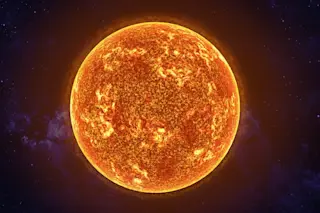In five or six billion years, our sun will expand into a red giant star hundreds of times larger than it is now. It will envelop Mercury and Venus, and possibly Earth as well, and then slowly puff away its outer layers. The hot, dense core left behind is called a white dwarf. And it will glow for billions of years.
It’s an open question what happens to the planets left behind. Scientists can perform simulations for our own solar system, but there are many possibilities. Several planets may remain (though likely stripped of their atmospheres). Or all the planets might be flung out of our solar system thanks to changing gravitational interactions. And stars like our sun are quite common, meaning many star and planet systems in the galaxy will – or already have – undergone such tumult.
Astronomers Dimitri Veras and Alexander Wolszczan (who found the first exoplanet ...














